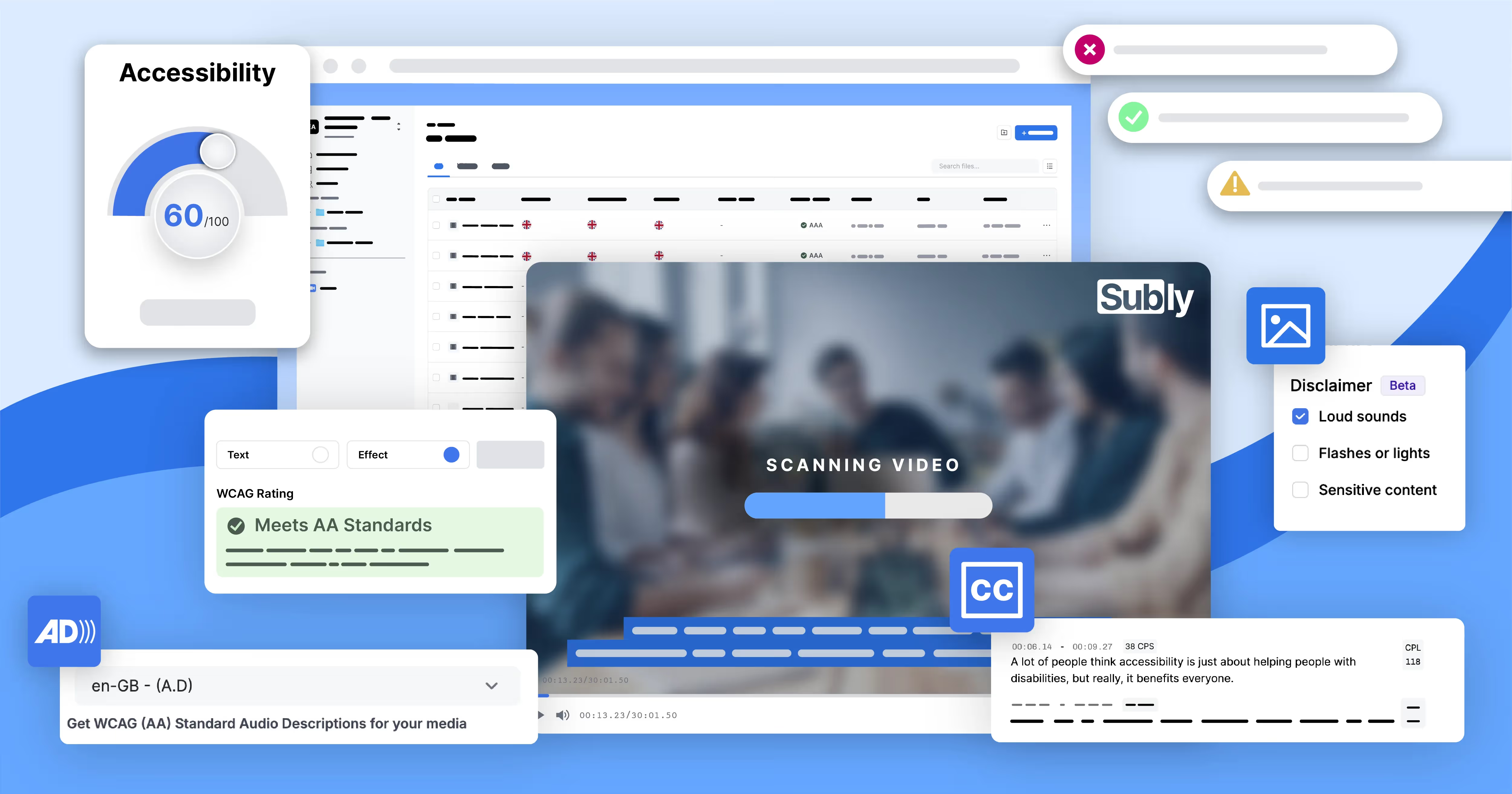
We envision a world where every piece of media is accessible to all, regardless of disability or language barriers. Our mission is to transform how video and audio content is delivered by making accessibility seamless through cutting-edge AI technology.
By harnessing advanced AI-driven automation and combining it with human expertise, we close the accessibility gap for businesses of all sizes, enabling them to reach global audiences inclusively and efficiently. We empower content creators, agencies, and enterprises to break down barriers and foster equal access to information and entertainment.
We are building a future where accessibility is inherent in all media, not an afterthought. Our commitment is to innovate continuously, drive meaningful impact for underserved audiences, and set new standards for inclusive communication worldwide.
Our Review
We've been watching Subly since their 2020 launch, and honestly, this AI-powered accessibility platform caught our attention for all the right reasons. What started as founder Holly Stephens' personal frustration with YouTube subtitles has evolved into something much bigger — a comprehensive solution that's actually making digital content accessible to everyone.
The Personal Touch That Makes a Difference
Here's what we love about Subly's origin story: it wasn't born in a boardroom or from market research. Holly literally couldn't figure out how to add subtitles to her YouTube videos easily, so she built the tool she wished existed. That kind of authentic problem-solving shows up everywhere in their platform design.
The fact that Holly brought experience from Google and Xerox to this mission gives us confidence they're not just throwing AI at a problem and hoping for the best. They actually understand both the technical challenges and the user experience side.
Beyond Basic Subtitles
While most competitors stop at captions, Subly goes deeper into true accessibility. We're talking audio descriptions, color contrast fixes, trigger warnings, and compliance reporting — stuff that actually matters for WCAG 2.2 standards. It's not just about adding text to videos anymore.
Their support for 30+ languages impressed us too, especially since they blend AI automation with human expertise for accuracy. That hybrid approach feels more trustworthy than pure machine translation, which can still be pretty hit-or-miss.
Who This Really Works For
We see Subly fitting perfectly for mid-to-large content teams who need to scale accessibility without hiring specialists. YouTubers and solo creators might find it overkill, but agencies, broadcasters, and enterprise marketing teams? This could be a game-changer.
The Adobe and Veed integrations are smart moves — they're meeting creators where they already work instead of forcing another platform switch. That's the kind of practical thinking that makes tools actually get adopted.
Automated AI-powered generation of captions, transcripts, and translations
Audio descriptions generation
Color contrast fixes
Trigger warnings for accessibility
Compliance reporting for legal standards like WCAG 2.2
Supports over 30 languages and dialects
Integration with third-party media editing tools such as Adobe and Veed
Upload media files directly or connect via integrations








